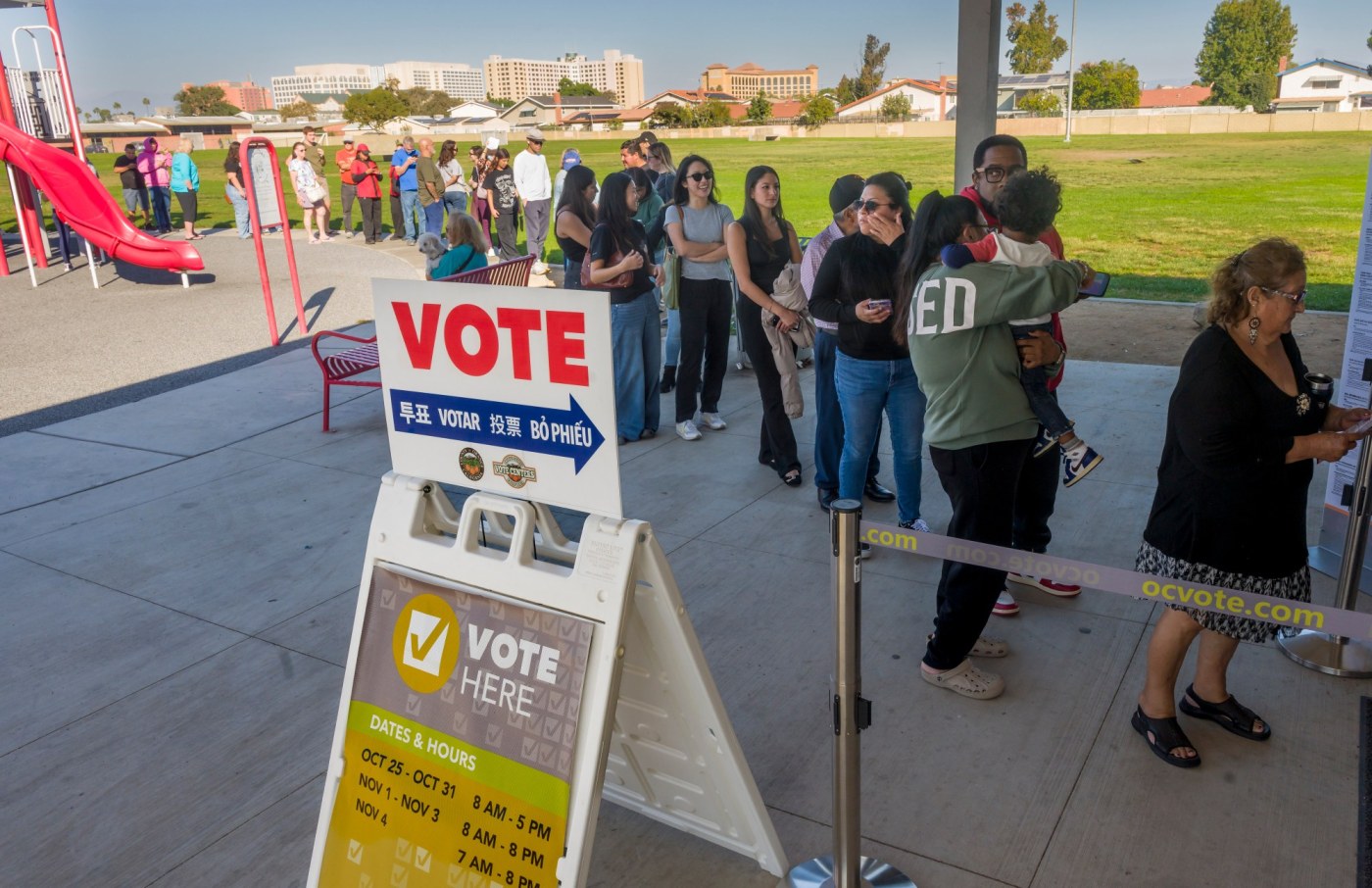A majority of Orange County voters chose to redistrict the state’s congressional boundary lines in the recent special election.
That’s in line with how voters decided statewide on Proposition 50 in the special election on redistricting. More than 7.3 million Californians, or 64.3% of voters, supported the ballot measure that redraws the state’s congressional lines for the next three elections, starting in 2026.
Zooming into Orange County — where, according to the latest tally from the registrar of voters on Friday evening, Nov. 14, 553,856, or 55.47%, ballots were cast in favor of redistricting — the heaviest support for Proposition 50 came from voters in and around Anaheim, Irvine and Santa Ana.
The greatest opposition came from coastal communities, including Dana Point, Huntington Beach and San Clemente, as well as precincts in Orange, San Juan Capistrano, Yorba Linda and unincorporated places in South County. Voters in Newport Beach, which is split into two different congressional districts under the measure, most strongly opposed the measure.
And if you consider Proposition 50 to be a referendum on President Donald Trump, it makes sense how Orange County voters decided on the measure.
In the 2024 presidential election, 49.7% of Orange County voters chose former Vice President Kamala Harris, whereas 47.1% chose Trump. Four years earlier, 53.5% of voters picked Biden compared to the 44.4% who cast ballots for Trump. And in 2016, former Secretary of State Hillary Clinton nabbed 50.9% of the vote in Orange County; Trump then got 42.3%.
“If you correlate the vote share for Donald Trump and the vote share for Proposition 50, you’ll get a strong correlation,” said Fred Smoller, a political scientist who teaches at Chapman University.
Gov. Gavin Newsom and the campaigns in favor of Proposition 50 told voters that a “yes” vote was a way they could counter Trump and his policies — as well as Republican-backed efforts to gerrymander in other states, at the behest of the president, that could benefit the GOP in the upcoming midterms.
“Orange County has changed,” Smoller added, noting it’s no longer a place that unequivocally backs Republicans on the ballot. “The post-war generation of White, older men in the military are exiting the electorate, and they’re being replaced by younger people and people of color, particularly Hispanics.”
The election results thus far “confirms the evidence that Orange County is very much a purple county,” said Louis DeSipio, who teaches political science at UC Irvine.
Still, DeSipio threw a bit of an asterisk on any analysis of results: “Off-year elections are weird, and off, off-year elections are even weirder. This may not reflect what’s going to happen in 2026 or 2028.”
“These (voters) are the truly committed who turned out for the election. We’ll see future competition for the presidency and gubernatorial races here in Orange County,” said DeSipio.
The Trump administration and California Republicans have filed a lawsuit to invalidate the new maps and force California to use those previously drawn by the state’s independent commission for the 2026 midterms and subsequent elections. They argue, in the lawsuit, that the maps were drawn to favor Hispanic voters and that racial gerrymandering is unconstitutional.
County elections officials have until Dec. 4 to complete their official tally of results. The California secretary of state will certify the election results on Dec. 12.
